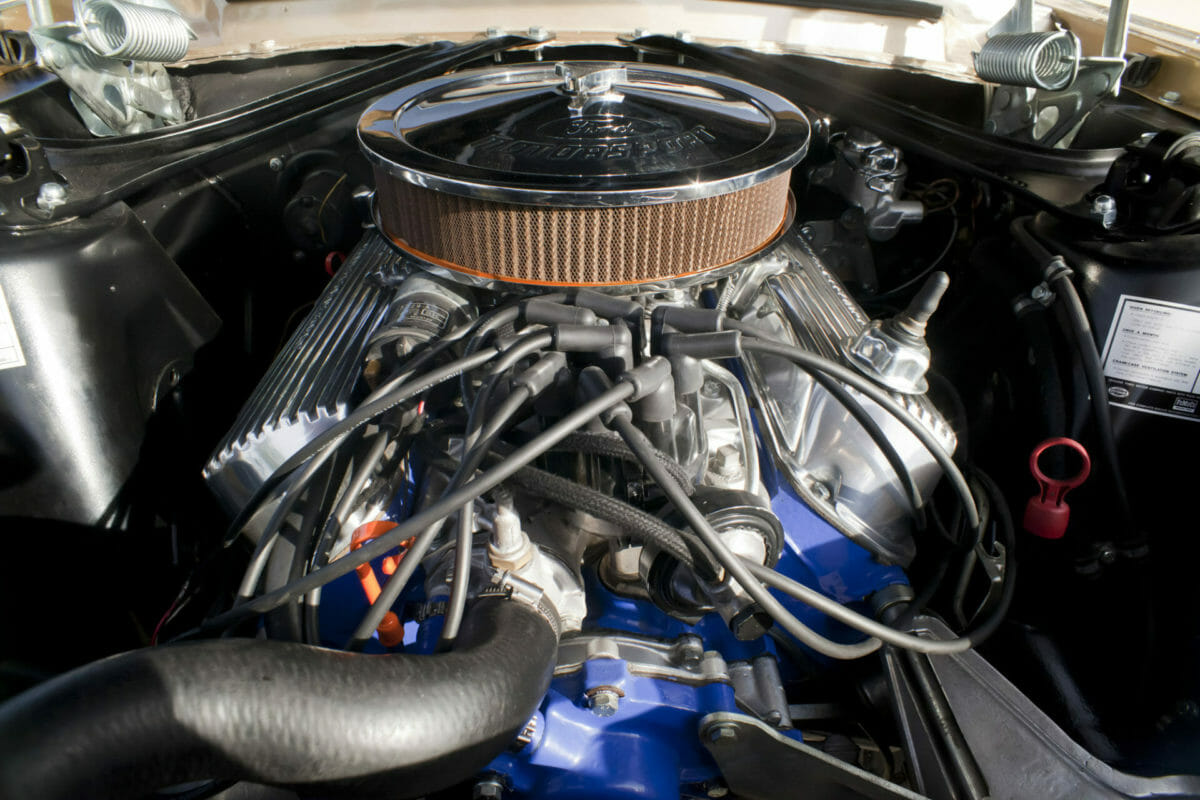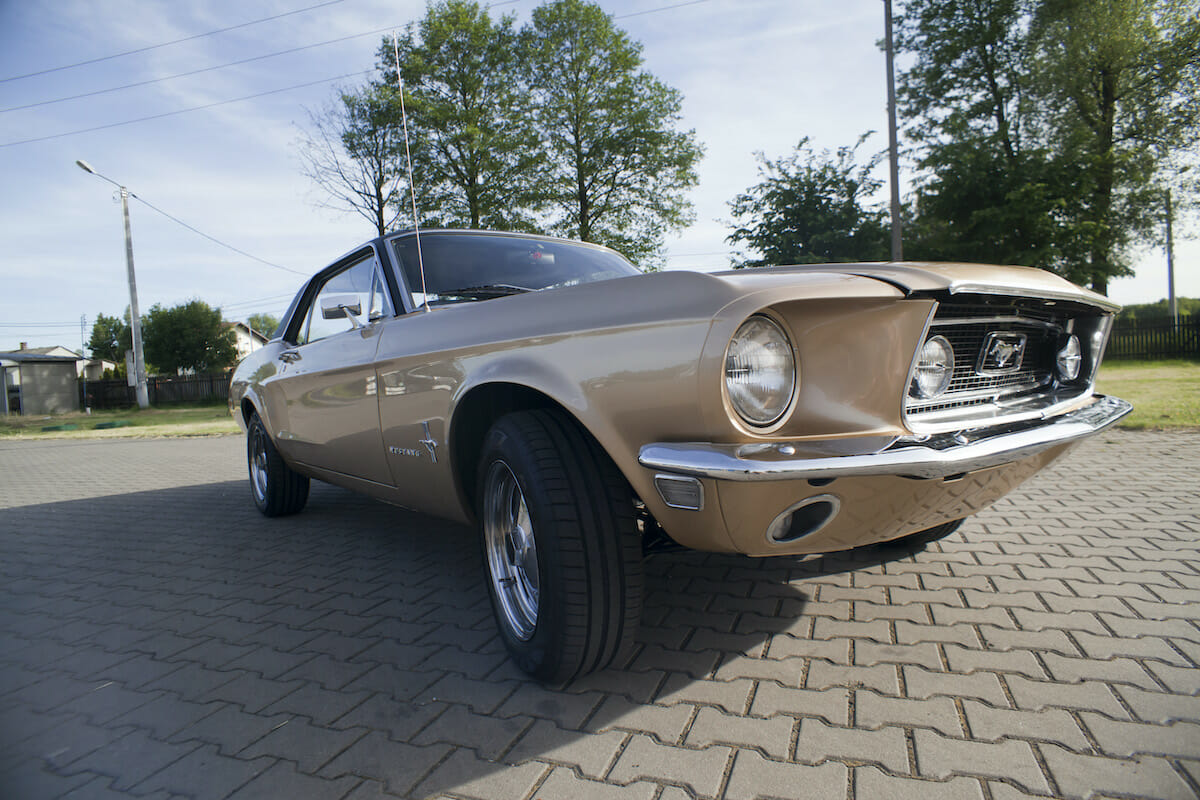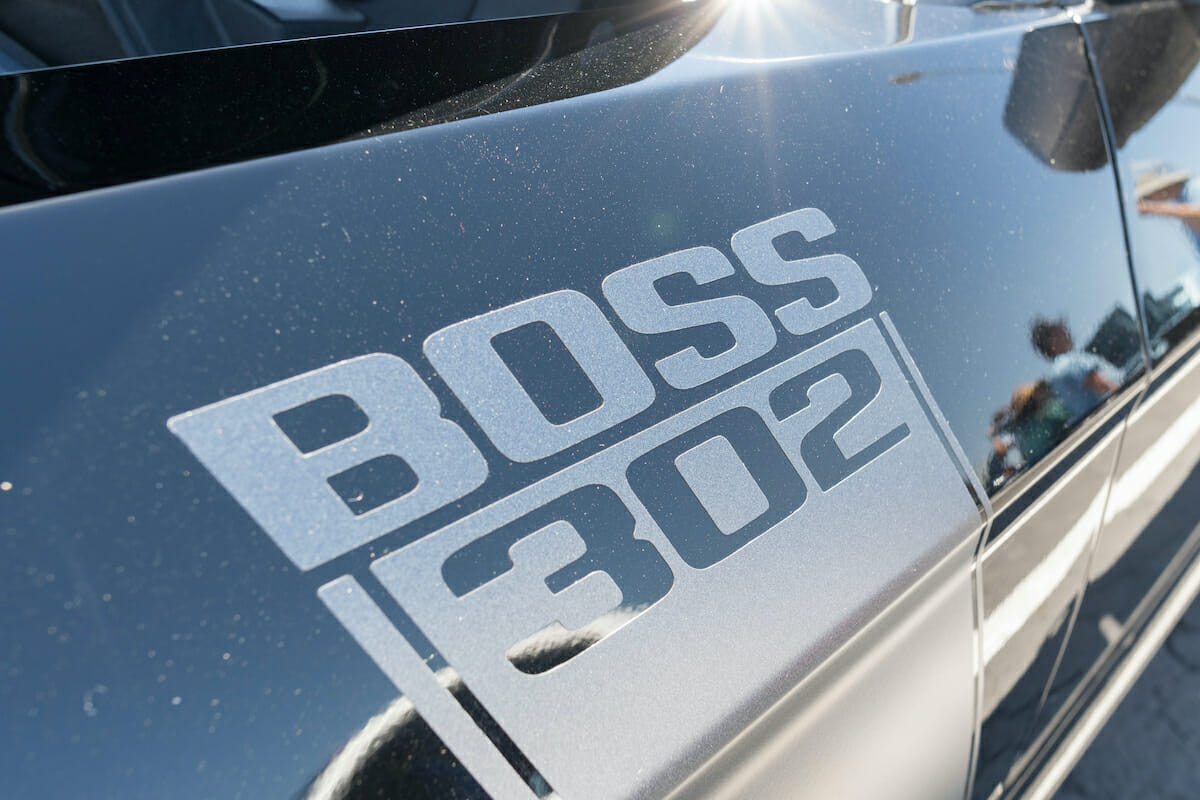The Ford 302 small-block is one of the best-known engines in the automotive world. We review its performance and design.

Ford’s 302 engine began life in 1968 as a replacement for the smaller 289, thus ushering the Ford small-block into a new era. Built primarily in Windsor, Ontario, from 1968 to 1978, some of the manufacturing shifted to Cleveland, Ohio, in 1970.
Ford eventually achieved a slightly larger 302 displacement by shortening the connecting rods, thus giving the pistons a bit more travel.
Ford’s Fairlane was the first car to receive the original Windsor 302, the last being Ford’s 2001 Explorer. Much of the 302’s notoriety stems from its time in the 1969 and 1970 Boss Mustangs, where it became known as the “Boss” block. Ford brought back the Boss 302 Mustang for the 2012 and 2013 model years.
Although no longer used in production cars, several build companies, including Ford Performance, still offer crate, race-ready302 engines for as little as $9,000. Just know that some of these engines come fully dressed, while others require some extra parts.
If you’re thinking of buying a used model with the 302 or are considering dropping one in your own vehicle, there are a few things you should know first. Here, we cover the basics of this legendary small-block.

Ford Performance 302 Crate Engine Options
Ford builds its 302 crate engine to five different specifications. There are two additional 347 options, and two 363 options, or stroked 302s. All of them use iron blocks and forged rotating assemblies but vary in terms of horsepower, depending on displacement:
- 302 – produces 340 horsepower and 330 lb.-ft. of torque
- 347 – produces 360 horsepower and 400 lb.-ft. of torque
- 363 – produces 507 horsepower and 450 lb.-ft .of torque
The 363 configuration also uses different heads, called Z2s, which help to produce the engine’s 507 horsepower.
The two 347s and 363s are distinguished by the names ending in either “F” or “R”. The difference in names indicates where the sump pan is located, either in the front of the engine or the rear. Price doesn’t change, but the rear-mounted sump 347 engine weighs about 30 pounds more. There is no weight difference between the two 363 configurations.
Ford 302 Crate Engine: Materials
Ford’s 302 crate engines use Boss 302 iron blocks. The connecting rods and crankshaft are made of forged steel, and the heads are aluminum with roller rocker arms. The 302 has a 9:1 compression ratio, while the 347 and 363 have 9.6:1 and 10.2:1, respectively.
The 363 uses FRPP Z2 cylinder heads. The intake valves use what Ford calls a “Velocity Vane“, which utilizes a port to redirect airflow around the valve stem.
Dyno tests show at least a 46 horsepower increase over the previous generation Z heads. The Z2 heads use stainless steel valves, steel alloy valve seats, and its combustion chamber is 63 cubic centimeters.
Both the 302 and 347 use X2 cylinder heads which use a 64 cc combustion chamber. Other differences separate the X2 from the Z2 heads, including the valve seat and valve guide manufacturing material. The valve cover gasket sealing rail on the X2 is wider to prevent leaks. Ford claims the X2 heads are 25 pounds lighter than OEM cast iron counterparts from the 302’s infancy.
Each 302 crate engine includes cylinder heads complete with valve trains and pushrods.
Ford sells each 347 “dressed,” meaning it includes an intake and fuel system. Its fuel system is a Holley Street Avenger Carburetor that flows up to 570 cubic feet per minute (CFM) of air. The Holley Carburetor sits atop of an Edelbrock Performer RPM Air-Gap intake. The engine uses a hydraulic roller camshaft, which keeps the power band between 800 and 6,000 revs. The 347 also includes ignition, including an MSD Distributor.
The 302 and 363 crate engines sell as long blocks, so they do not include intakes or a fuel system. Ford sells both on its parts website.
Ford 302 Crate Engine: Applications
All of Ford’s 302 Crate Engines do not include smog equipment. Each stroked 302 has a disclaimer, stating they are intended for competition use only. Some engine configurations work better for specific cars. Rear sump engines, for instance, work better with Fox-body Mustangs. Make sure to research which option best suits the car it’s going into.

Ford 302 Crate Engine: Other Sources
Ford makes 302 crate engines that cost at least $9,000, but there are other much cheaper options available from different companies. The XP1 series short block, which does not include heads, costs just $695 from SP Precision.
This engine’s warranty is near as comprehensive as Ford’s but only lasts for 90 days or 4,000 miles. SP Precision accepts a core deposit, meaning it discounts $220 from the XP1 if the consumer returns an old 302. SP Precision advertises its engines as “Remanufactured” and not rebuilt.
A fully assembled long block from sump to carburator costs just $2,977 from ATK High-Performance Engines. However, these engines are rebuilt to 1980-1986 specification, meaning they are equipped with cast iron cylinder heads and 8.5:1 compression. This engine replaces a stock 302.
A Company called “Blueprint Engines” builds crate engines as well. They offer a 347 stroker for about $6,000, fully dressed from sump to carburetor. It uses aluminum cylinder heads but comes with a cast steel crankshaft and an iron block.
Blueprint’s 347 stroker uses forged steel pistons and rods, and a hydraulic roller cam. It creates a 10:1 compression ratio to produce 415 horsepower and lb.-ft. of torque.
Blueprint’s warranty is for 30 months or 50,000 miles and covers the complete engine. Blueprint will also cover accessories, such as fuel injectors, fuel pumps, and water pumps for up to one year. After one year Blueprint considers them maintenance parts thus they are no longer covered.
This warranty extends only to complete automobile engines and does not include racing or marine engines. Short blocks are covered under a separate 12-month warranty.
Ford 302 Crate Engine: Small-block Benefits
Building a racing car takes a lot of factors into consideration, which normally wouldn’t come into play with a normal road car. Big block engines are viable options, such as 390s or 460s, but there are disadvantages to that. While a big block not only takes up greater real estate in the engine bay, it may also be heavier than a small-block.
Depending on how ideal weight distribution is calculated and for what purpose, a small-block engine’s mass could sit closer to the firewall. Its mass also gathers closer to the ground, lowering the car’s center of gravity, which improves acceleration performance.
Small-blocks make big block power, as Ford proved with its 363 crate engine. Forced induction can help develop that power as well, but boost is harsh on engine internals, especially if they aren’t built to handle it.
Ford Crate Engines: Warranty Information
Ford provides a blanket warranty for all performance crate engines. At either 24,000 miles or 24 months, Ford will replace any factory defective part. Ford retains the option to use either a brand new or re-manufactured part to fix the defect. This warranty covers every single piece of the engine that resides inside the cylinder heads and engine block.
This warranty does not cover:
- Sealed or high-performance racing engines
- Parts replaced as normal maintenance
- Engine installation or removal
- Engines with a disconnected odometer or altered mileage
- Any loss of time, inconvenience, or loss of use (Towing, shipping, rental vehicles)
Check the warranty to ensure covered engines and parts.
What Fords had the 302 Engine?
The 302 was widely available across all Ford lines starting in the 1960s. Just about any Ford Mustang, Crown Victoria, Thunderbird, Lincoln Town Car, LX, Mark VII, and many more had the 302 as an option. In fact, the list of Ford vehicles that didn’t have the 302 is actually a shorter list.
The Blue Oval slowly began phasing out the 302 in the 1980s, making a push towards turbocharged, small-displacement engines, ending with the 2001 Ford Explorer.
Ford 302 Crate Engine: Is it Right for You?
Ford placed its 302 in production vehicles from 1968 until 2001 but clearly kept a close and substantial following. Shops build fully-dressed affordable 302s, including stroked versions, to this day. They offer comprehensive long-lasting warranties as well. The 302 is ideal as a racing engine, and many shops produce readily available brand-new parts.
If purchasing a crate engine with the intent to register it for a road-going car, become familiar with its registered state’s engine swap laws. California especially imposes strict regulations on engine-swapped vehicles. An engine placed in a vehicle must be of the same year or newer and have its original smog equipment attached and working.
Photos: Ford Motor Company; Deposit Photos